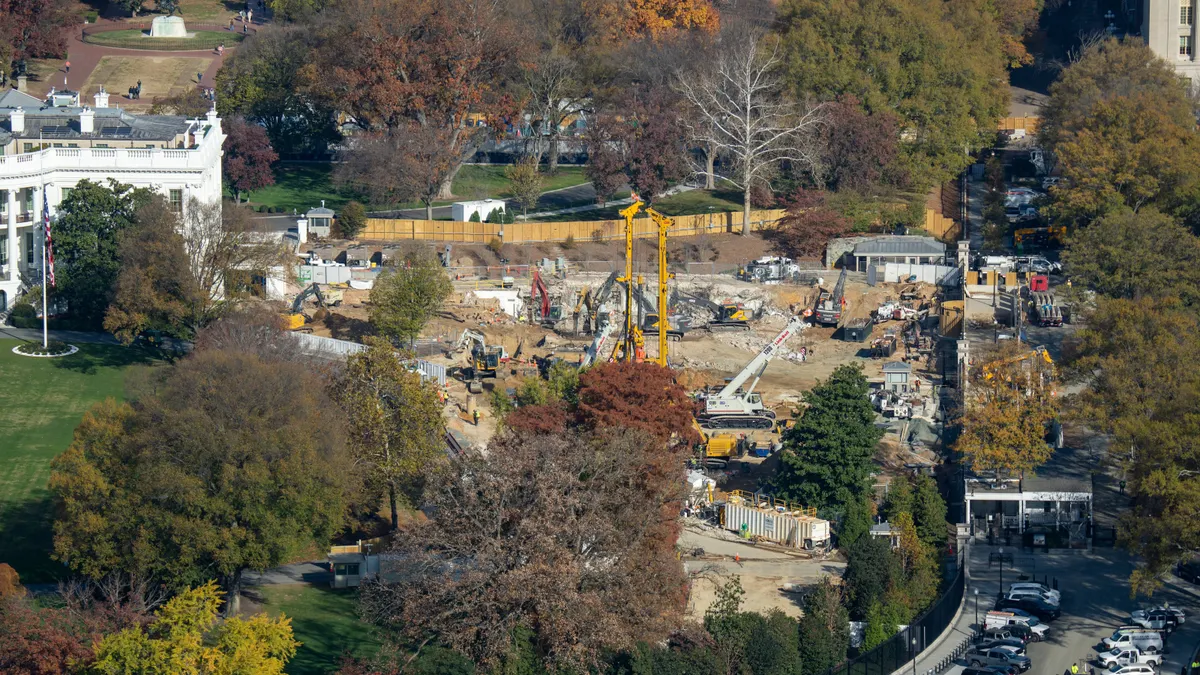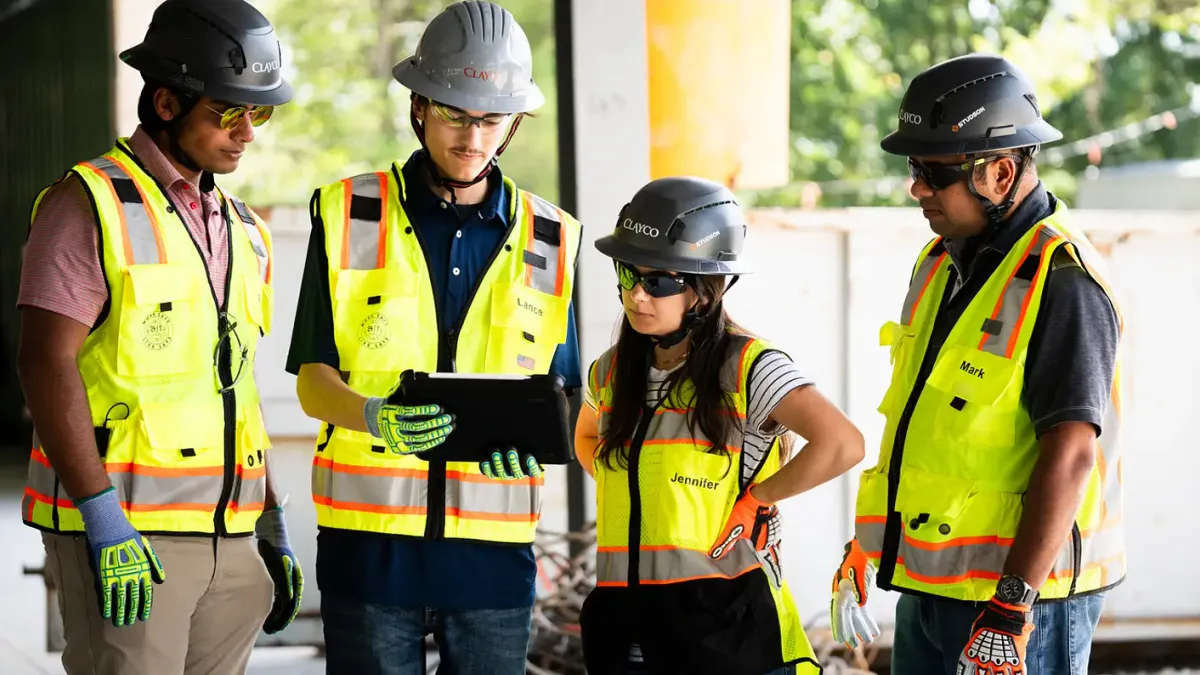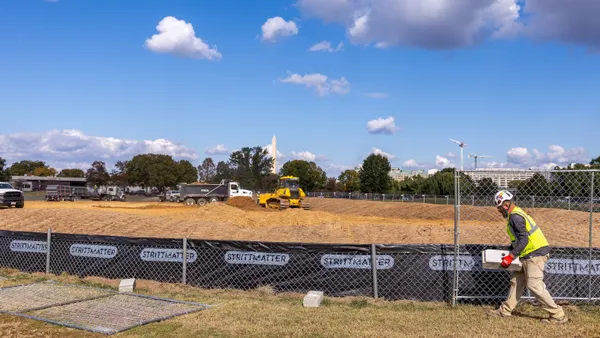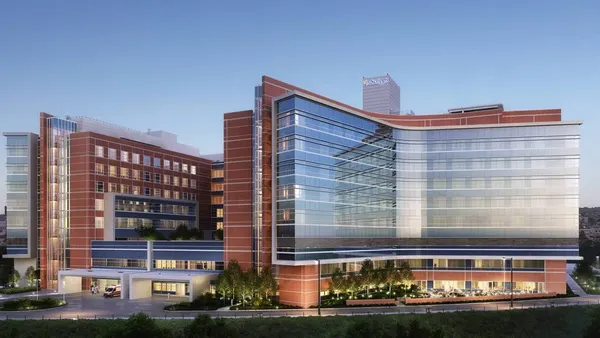Dive Brief:
- Nonresidential construction spending dipped 0.2% in August to a seasonally adjusted annual rate of $1.24 trillion, according to U.S. Census Bureau data.
- Private and public nonresidential spending fell 0.3% and 0.1% respectively, according to the report. Ten of the 16 nonresidential categories posted monthly declines, led by the drop in manufacturing construction spending, according to Associated Builders and Contractors.
- The weakness marks the third monthly contraction in four months, putting nonresidential construction spending 1.5% lower year over year, said Anirban Basu, ABC chief economist.
Dive Insight:
August’s spending report, originally scheduled to release on Oct. 1 before the government shutdown caused a delay, showed what most contractors expected: further contraction.
That included a continued strain across major segments outside of the data center boom, said Macrina Wilkins, senior research analyst with the Associated General Contractors of America. Three of the largest nonresidential segments posted declines in August, according to the spending data.
“Private and public sector construction owners are clearly being impacted by uncertainty about federal funding, material prices and labor supply,” said Wilkins in the release. “The question is whether the reopening of the government will lead to a future bump in demand for construction.”
Manufacturing construction spending, for example, ticked down 0.9% in August and is now about 8.2% lower through August compared to last year. Commercial construction also dropped in August, down 0.1%, and trails last year’s spending pace through August by 7.5%, according to the ABC analysis.
“The manufacturing and commercial categories have been particularly weak in 2025, while momentum remains confined almost exclusively to the data center segment,” said Basu in the release. “This should come as no surprise given that approximately 1 in 7 ABC members are under contract to work on a data center, and those contractors have significantly higher backlog than those that are not.”
That leaves the industry increasingly reliant on data center work to offset softness elsewhere. Any easing in financing conditions or overall economic clarity could help stabilize activity, added Basu.
“Of course, this data pertains to August and reflects neither the effects of the government shutdown nor the cost-raising potential of tariffs that were implemented at the start of the month,” said Basu. “With private nonresidential activity buckling under the weight of high borrowing costs, extraordinarily elevated uncertainty and rising materials costs, a slowdown in public sector work could lead to a particularly difficult few quarters for the industry.”














